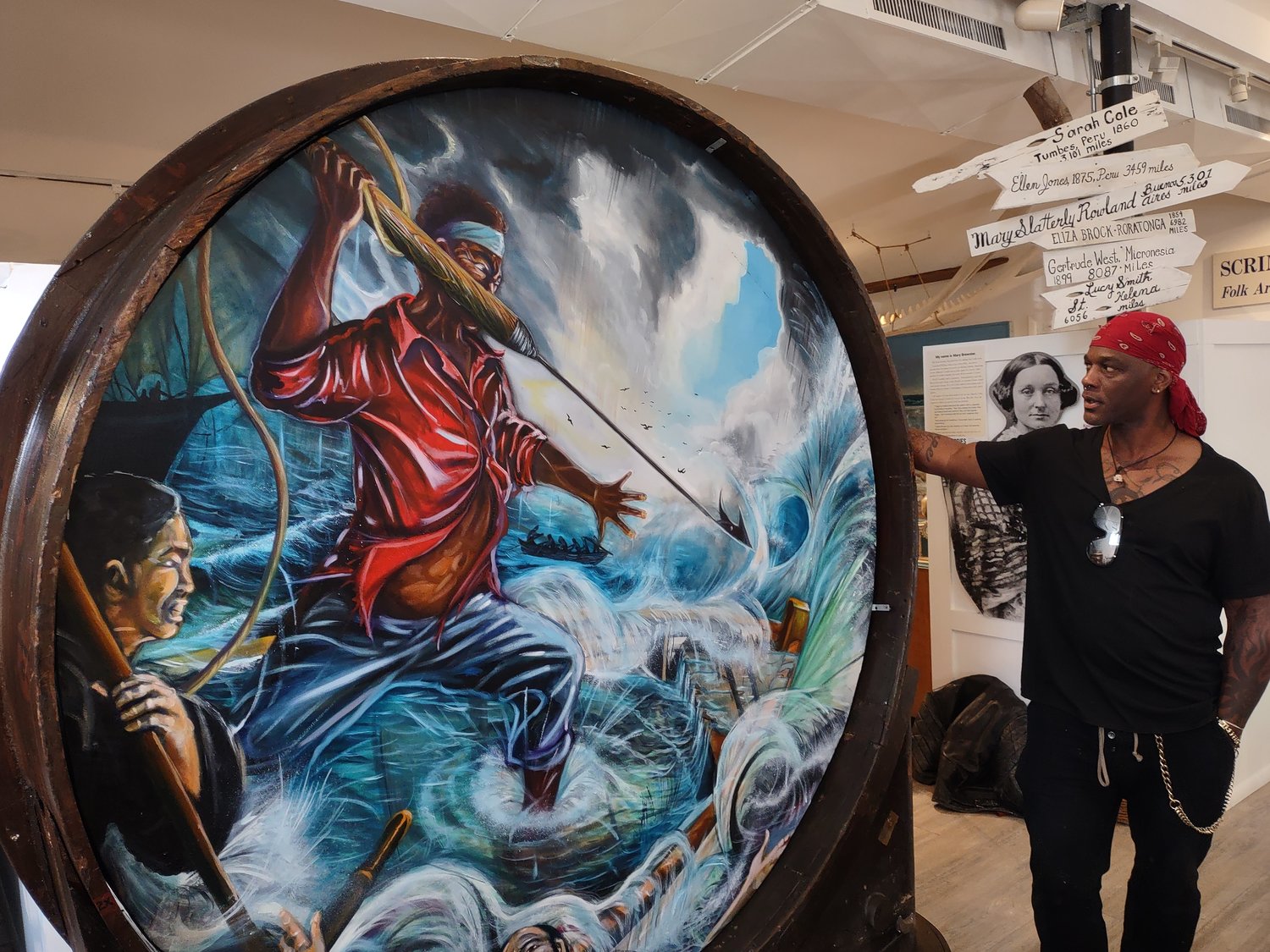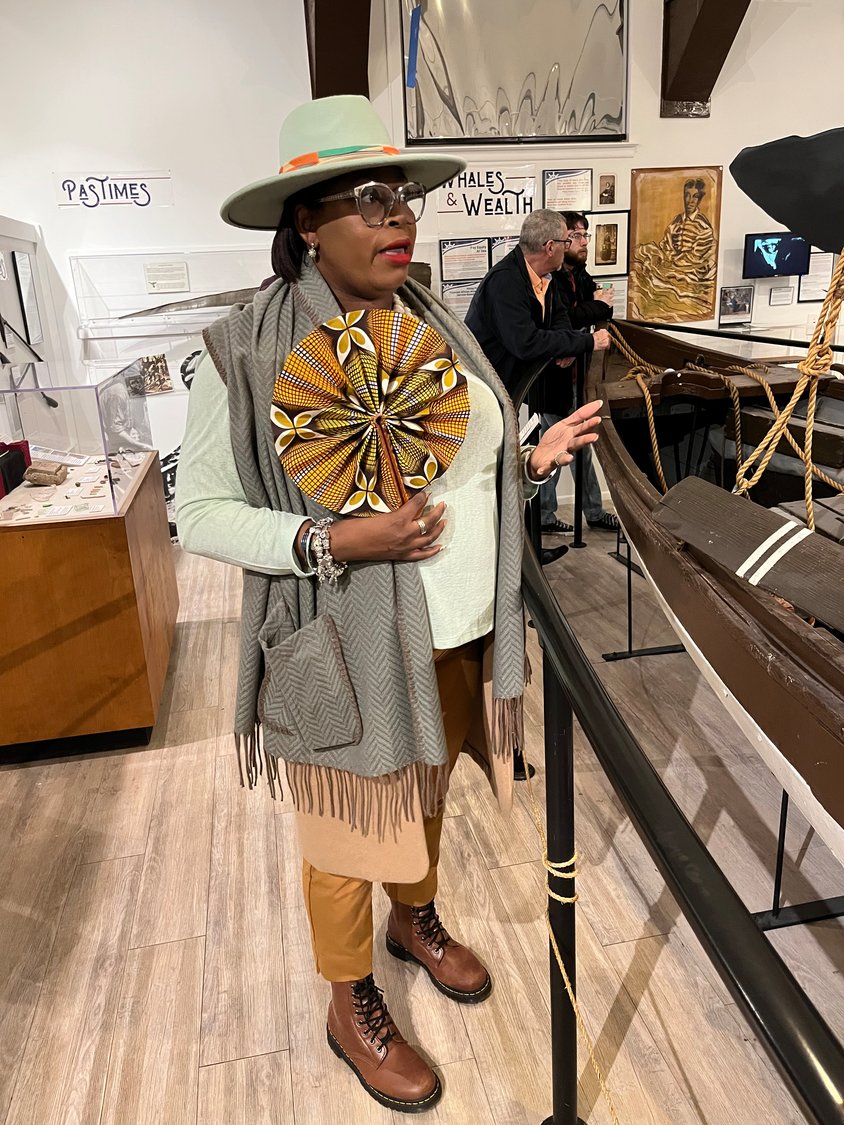Thursday, April 18, 2024
Whaling Museum hosts new exhibit on Black whalers
The Whaling Museum & Education Center in Cold Spring Harbor has opened its newest exhibit on the role and history of African Americans in the whaling industry. Titled “From Sea to Shining Sea: Whalers of the African Diaspora,” this exhibition takes a close look into the first integrated and meritocratic industry in American history.
The exhibition, which will run through 2024, is the first one highlighting the maritime history of African Americans that the museum has held in decades, according to Executive Director Nomi Dayan. She addressed the crowd who had gathered for the exhibition’s opening night on Feb. 15 explaining why the museum felt it was important to focus on this theme for the exhibition.
“We’re very proud to have developed and hosted this exhibit,” Dayan said. “There are a lot of shocking and disturbing stories that came from putting this exhibit together, but also a lot of amazing tales of triumph and perseverance that I think can speak to us so much today.”
From the 18th and into the early 20th centuries, people of color, the majority of whom were Black, constituted between a quarter to a third of the participants in the American whaling industry. One of the last whaling voyages in American history, aboard the ship The Daisy, consisted of a crew almost entirely composed of Black whalers, excluding the cooper, or barrel-maker, and the captain, as well as a scientist.
The exhibition highlights not just the impact of African Americans on the whaling industry itself, but also how that industry intersected with the wider history and experience of Black America.
While slavery existed in America, whaling ships offered many enslaved Blacks in the Deep South a chance to escape, as they were too far from the Northern border to risk the journey on foot.
In fact, several important figures in American history were whalers or worked in the industry at some point. Crispus Attucks, the first person killed at the Boston Massacre in 1770, was a mixed-race whaler of African and Native American descent, while Frederick Douglass himself spent some time working as a caulker, or someone who used sealing materials like oakum to seal the joints in the hulls of ships, while enslaved on the whaling docks in Maryland.
Brenna McCormick-Thompson, the curator of education at the Whaling Museum, challenged attendees to reflect and re-interpret what their idea of an American whaling crew would have looked like. Referring to the whaling longship in the center of the exhibit, which had once belonged to the The Daisy, she explained that history can often be very different from what people generally imagine.
“In the past we have not been explicit about telling you that the people in this boat were undoubtedly all Black,” McCormick-Thompson said. “This is part of the problem, because when we don’t tell people who were in this boat, oftentimes their imaginations let them imagine people who were not accurate representations of what was going on.”
The exhibit was designed and set up by Guest Curator Dr. Georgette Grier-Key, the executive director and chief curator of the Eastville Community Historical Society in Sag Harbor. Grier-Key, who has worked in historical conservation and education for the last two decades, explained in an interview why she believed this exhibit was so relevant today.
“I think it’s important that we understand that history is present with us right now, and that it’s not something that’s so far away and out of our reach,” Grier-Key said. “The outcome is to preserve our history, to teach it, to educate people about it, and to use it in our everyday lives so we can learn from it.”
Grier-Key mentioned that when setting up the exhibit, one of the most important aspects for her was the inclusion of art pieces by modern artists, such as a large double-sided painting of iconic Sag Harbor whaler and ferryman Pyyrhus Concer. Since so many original historical pieces have been lost, and since photographic and artistic depictions of African American sailors was rare, she believed including modern artwork was essential to reinforcing the history and heritage in the exhibit.
“That was a big push for me, that I needed to have artwork and I needed to have a new re-imagining of these whalers’ lives,” Grier-Key said. “It was important for me to have the contemporary art to give it more of a contextualized feel.”
HELP SUPPORT LOCAL JOURNALISM
The worldwide pandemic has threatened many of the businesses you rely on every day, but don’t let it take away your source for local news. Now more than ever, we need your help to ensure nothing but the best in hyperlocal community journalism comes straight to you. Consider supporting the Herald with a small donation. It can be a one-time, or a monthly contribution, to help ensure we’re here through this crisis. To donate or for more information, click here.
Sponsored content
Other items that may interest you









